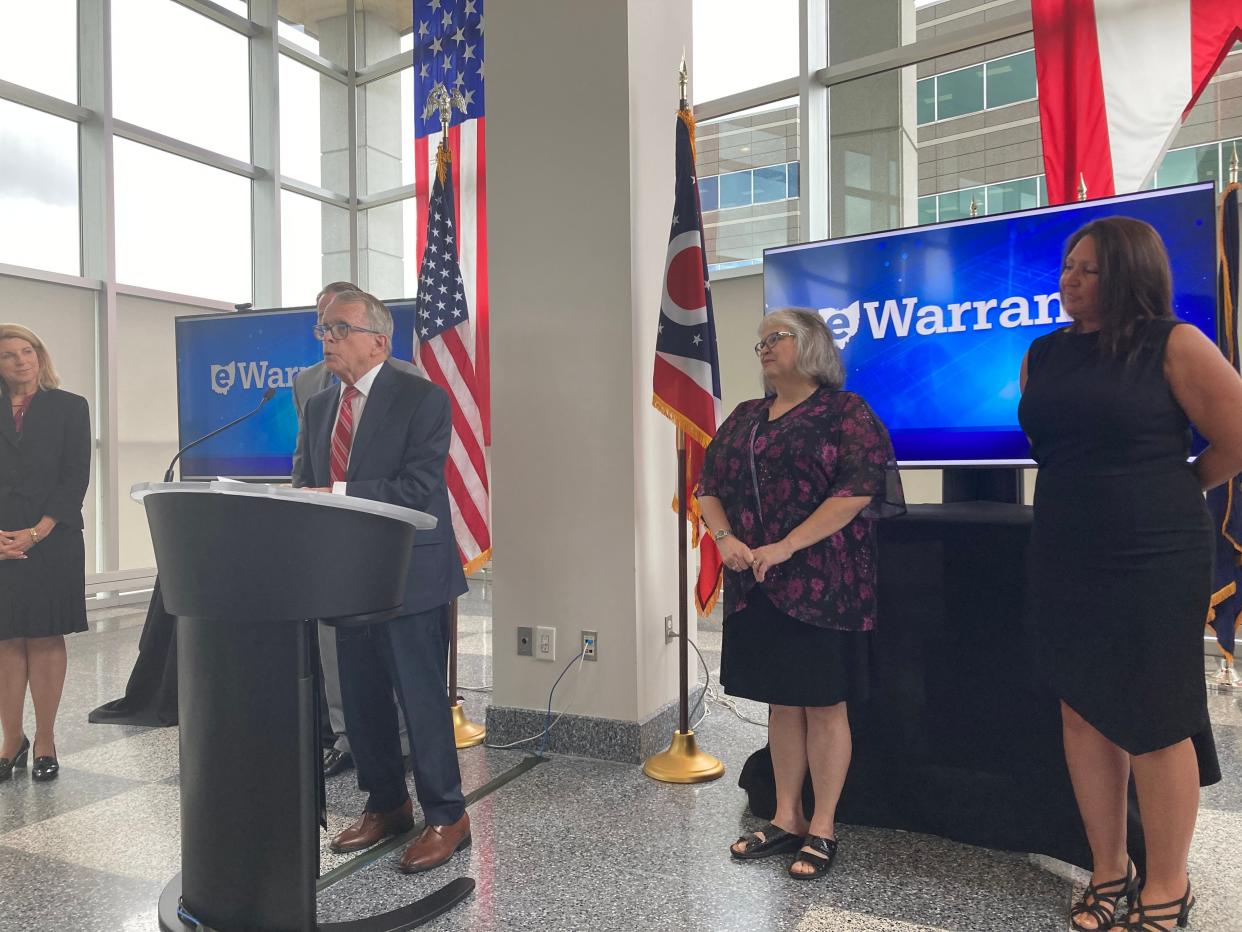Ohio launches new way to upload data needed to catch criminals. But few use it so far.

- Oops!Something went wrong.Please try again later.
For years, Ohio's antiquated way of adding information to its background check system has been riddled with problems, opening the door for criminals to roam free and for those accused of violent crimes to purchase guns with ease.
The state's process for uploading warrants and protection orders has been clunky, bogged down by paperwork and often executed differently county by county. Judges or magistrates issue warrants to arrest individuals accused of crimes, but if the information isn't distributed widely, the suspect can easily escape.
That same information is used to prevent individuals from purchasing a firearm if they are accused of a violent crime or subject to a protection order. In 2019, Gov. Mike DeWine called Ohio's system "dangerously deficient."
On Wednesday, DeWine and Lt. Gov. Jon Husted announced a new system available statewide that could streamline how warrants and protection orders are uploaded across Ohio. It's called eWarrants, and the $4.7 million LexisNexis system is free to local county officials.
The only problem: just two counties are using it thus far.
Agencies in more than a dozen counties want to use the new system and are working to integrate it with their current software vendor, DeWine spokesman Dan Tierney said. Across 88 counties, law enforcement and court officials use 19 different vendors to upload these records so getting them to work together is a tall task.
But that means dozens of local police and court officials aren't using eWarrants. In some instances, they are still using paperwork that can take days or weeks to input.
So Husted had a pitch for local officials: "It is free and easy for our friends in local government to use. It's state-funded and locally operated. And the more you use it, the more powerful this tool will be."
Ohio law doesn't require local officials to upload this information into state and federal databases used by law enforcement and licensed firearm dealers. DeWine wants lawmakers to require officials to input warrants for serious crimes within 48 hours – but a bill hasn't been introduced yet.
In the meantime, Ohio is making progress on a voluntary basis. In March 2019, there were 18,000 Ohio warrants in the federal criminal database used before firearm purchases. Now, there are more than 220,000.
The ultimate goal is to create a more complete background check system where suspected criminals can't slip through the cracks. A 2018 Columbus Dispatch investigation found that thousands of local warrants – including warrants for violent crimes – were never entered into statewide or national databases.
Meigs County Common Pleas Judge Linda Warner and her fellow elected officials were early adopters of the new eWarrants system, and she praised it Wednesday as a lifesaver and timesaver.
"When there's a physical piece of paper, it was often misplaced. It was in the back of a cruiser or somebody left on vacation and we don't know where it is," Warner said. "This takes away those kinds of real human things that were holding us back, frankly."
Warner and her colleagues hope other county law enforcement and court officials join them. Meigs County Sheriff Keith Wood said: "Wake up. Get involved. We need you."
Jessie Balmert is a reporter for the USA TODAY Network Ohio Bureau, which serves the Akron Beacon Journal, Cincinnati Enquirer, Columbus Dispatch and 18 other affiliated news organizations across Ohio.
Get more political analysis by listening to the Ohio Politics Explained podcast
This article originally appeared on The Columbus Dispatch: Ohio's warrants were a mess. A new system could help if more use it.

